When installing some, or all, third-party software updates, you receive the error code 0x800b0101.
Determine if you are affected – Possible Cause 1

In WindowsUpdate.log you will see the following error in the log:
Failed WS error: The date in the certificate is invalid or has expired
*FAILED* Web service call
In WUAHandler.log you will see the following error in the log:
OnSearchComplete – Failed to end search job. Error = 0x800b0101.
Scan failed with error = 0x800b0101.
Step 1: Renew the SSL certificate bound to the WSUS instance in IIS
The error suggests that the certificate bound to the WSUS instance in IIS has expired. You will need to generate a new SSL certificate and bind it to the site
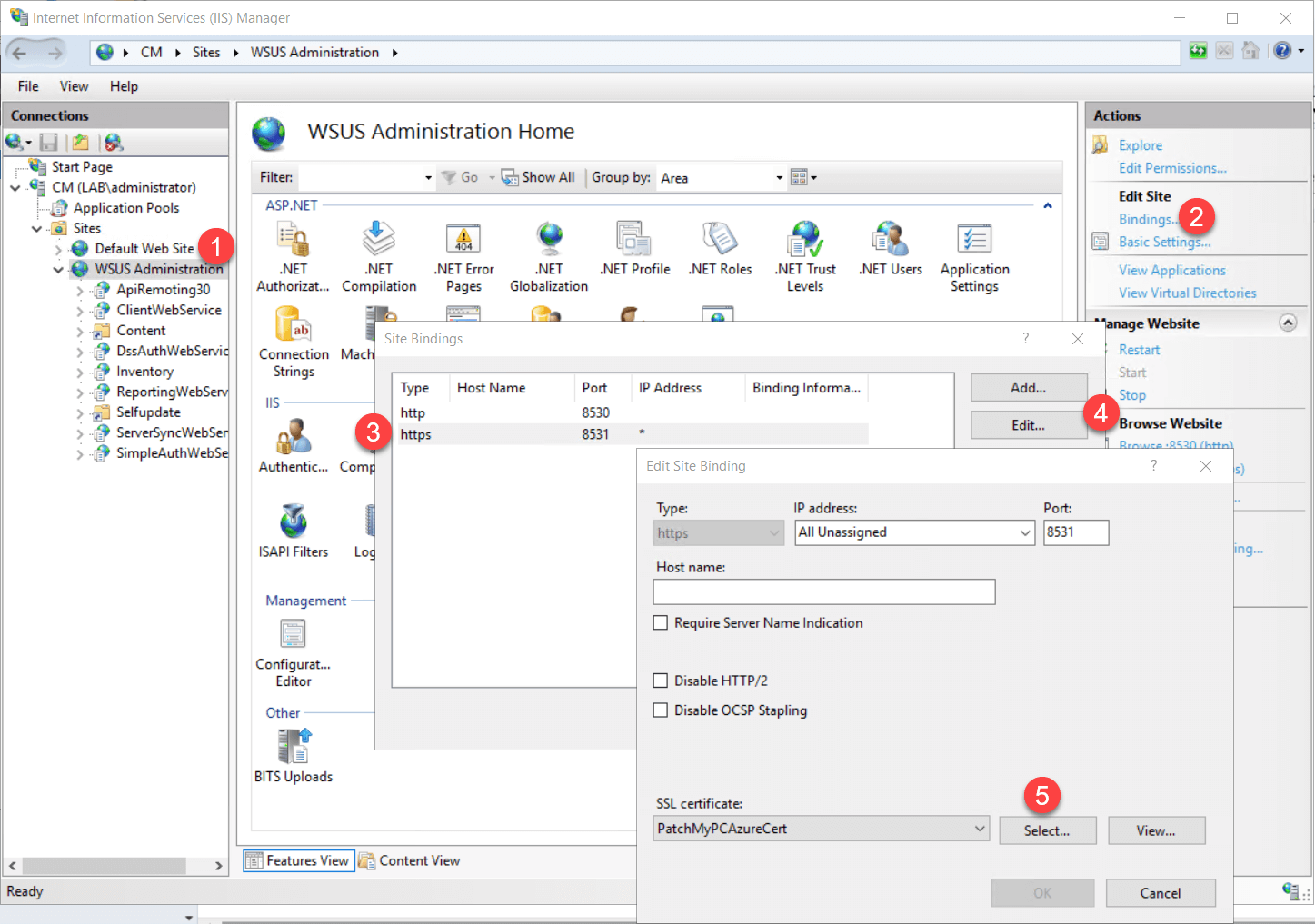
Determine if You are Affected – Possible Cause 2
This error generally will occur when attempting to install some (not always all) third-party software updates. You may see the following error in software center:
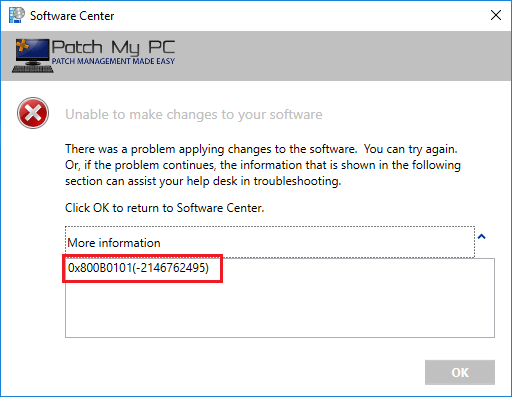
In WUAHandler.log and UpdatesHandler.log you will see the following error in the log:
Failed to download updates to the WUAgent datastore. Error = 0x800b0101.
Failed to initiate install of WSUS updates, error = 0x800b0101
Failed to start batch install through WSUS Install handler , error = 0x800b0101
InstallUpdatesInBatch failed with error 0x800b0101
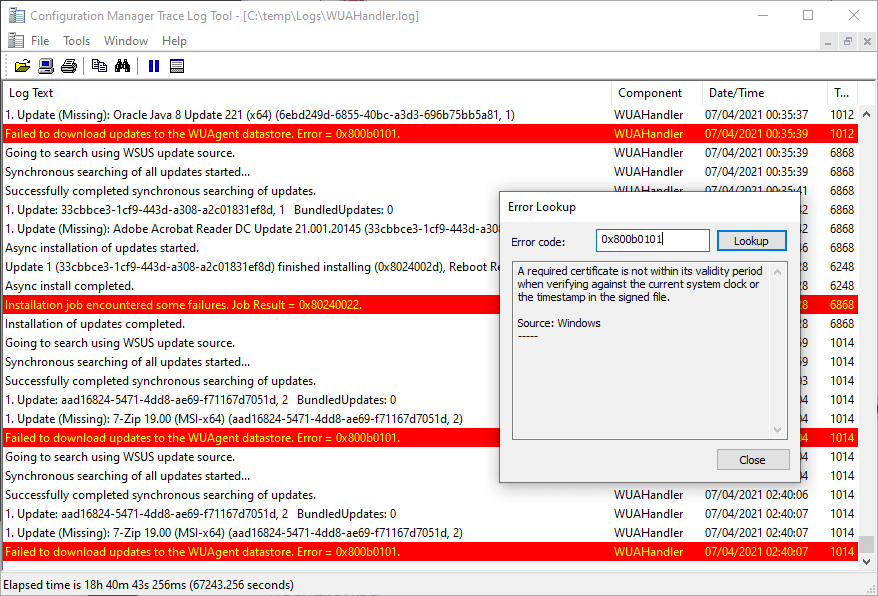

In WindowsUpdate.log you may see something similar to the below:
Error: 0x800b0101 when verifying trust for C:\Windows\SoftwareDistribution\Download
Copy update to cache failed with exit code = 0x800B0101
ISusInternal:: CopyUpdateToCache2 failed, hr=800B0101
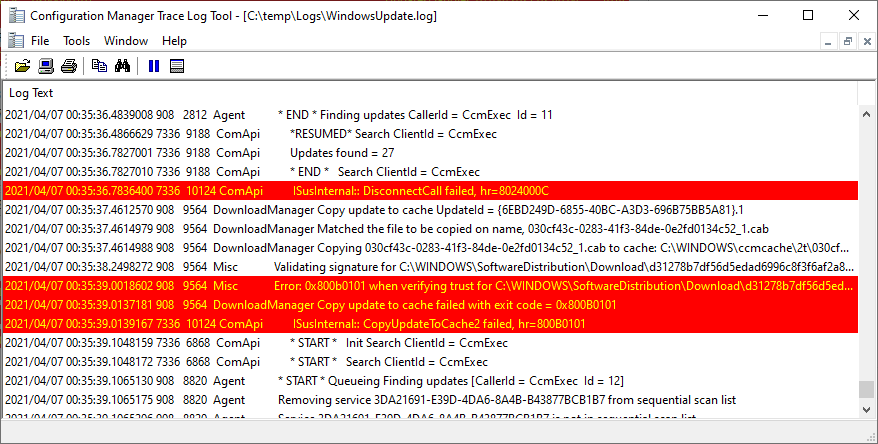
0x800b0101 = A required certificate is not within its validity period when verifying against the current system clock or the timestamp in the signed file.
This error occurs when a client attempts to install a software update which is signed with a code signing certificate that is expired, and it was not timestamped.
By default, timestamping is enabled in the Patch My PC Publisher to provide you with the flexibility of ensuring software updates can still install on your devices even if your code signing certificate has expired.
However if timestamping is disabled, and updates were not timestamped, you will experience this error when clients attempt to install said updates after the code signing certificate has expired.
Sometimes customers disable timestamping in the Publisher to workaround proxy or firewall issues to timestamp.digicert.com. We do not recommend disabling timestamping.
To determine if have timestamping enabled or disabled in the Publisher, check the registry value HKEY_LOCAL_MACHINE\Software\Patch My PC Publishing Service:DisableTimestamping. A value of 1 means it is disabled, whereas 0 or a non-existent registry value means it is enabled (the default).
You can see the certificate used to sign an update and whether it is timestamped by right clicking on the .cab file and going in to Properties. The .cab file for the problem update can be found in ccmcache on the client, or the WsusContent directory on the WSUS/SUP server.
Go to the Digital Signatures tab, select the certificate from the list and choose Details.
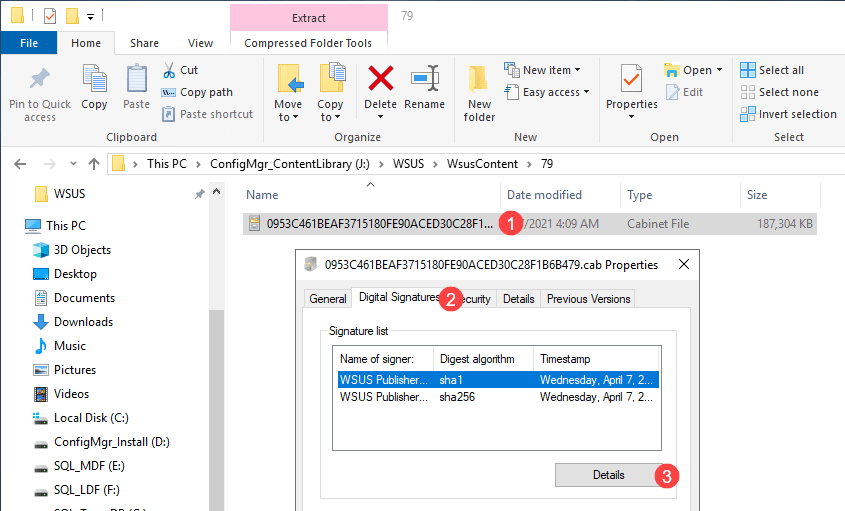
From here you can see if the .cab file is timestamped in the Countersignatures section at the botom.

Click View Certificate and verify if the certificate has expired.

Step 1: Renew your code signing certificate and import it into the Publisher
If you use an internally issued certificate from your own PKI root / intermediate Certificate Authorities, re-issue a new code signing certificate. Ensure your devices have this new certificate in their Trusted Publishers certificate store.
If you use a self-signed certificate, regenerate a new code signing certificate and ensure your devices have this new certificate in their Trusted Root and Trusted Publishers certificate store.
After you have obtained a new valid certificate, import it into the Publisher.
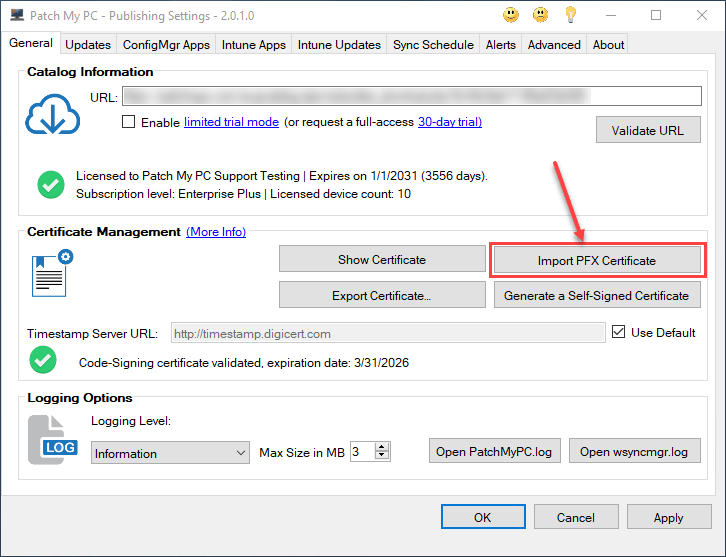
Note: If your SUP is remote from your site server, ensure this new certificate is also in the Trusted Root and Trusted Publishers certificate store on the site server itself.
Step 2: Re-publish the software update(s)
Next, you must re-publish the problem updates, so they are recreated in WSUS with a new .cab file using a new code signing certificate.
We have an article that discusses When and How to Republish Patch My PC Third-Party Updates in more detail if you want to learn more.
Right-click on the offending updates and choose Republish update(s) for these product(s) during the next sync schedule.
For the subsequent pop-ups, select Yes for the first pop-up, and we recommend you consider selecting Yes for the second pop-up.Ã
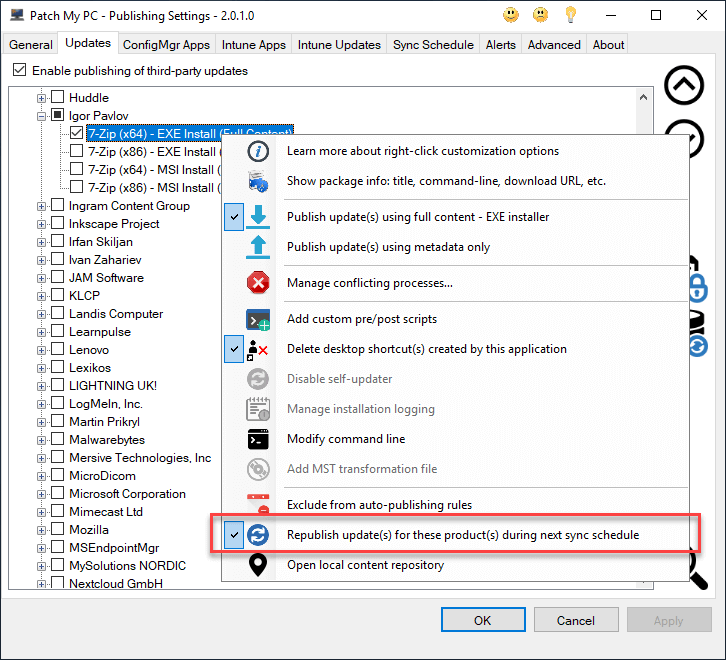
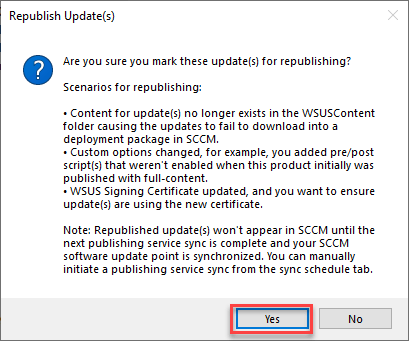
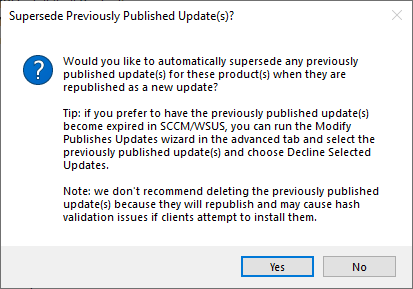
Step 3: Sync, the Publisher, download the updates, distribute, and deploy
After that, you need to sync the Publisher to republish the software update to WSUS again. In the Sync Schedule tab, click Run Publishing Service Sync.
Once the Publisher has finished synchronizing and your SCCM SUP has synchronized with WSUS, you can now download, distribute and deploy the newly republished software update(s), which will be code signed using the new certificate.
You can verify the republished update is using the new certificate by observing the certificate on the .cab file stored in the WsusContent directory on your WSUS/SUP server as shown previously at the end of the Determine if You are Affected section.
